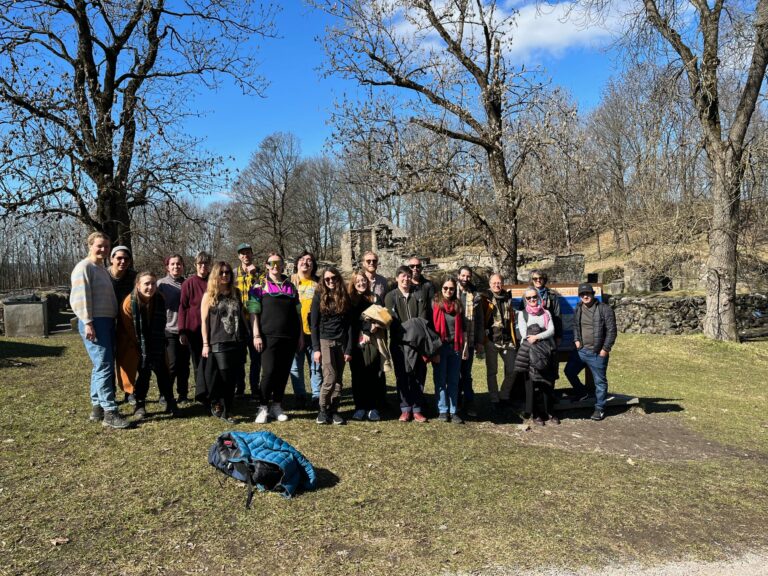
Introduction
What exactly is extraction? How does it relate to extractivism? What does ethnography bring to the study of extraction, and how might our own ethnographic practices be extractive?
In April 2023, the course “Extraction Ethnographies” offered a space to critically reflect on these questions. Organized through a collaboration between the Department of International Environment and Development Studies (NMBU) and the TIK Centre for Technology, Innovation, and Culture at the University of Oslo, the course brought together researchers across various scholarly fields. It was organized by Susanne Bauer, Ana Delgado Aleman, Esben Leifsen, Suzanna Sawyer, Tahani Nadim, Manuel Tironi and Beth Anwyl Roberts, and hosted 15 participating PhD students and post-doctoral researchers. Together our research spanned many different objects and forms of extraction, from resources such as copper, seagrass, aluminum, olives and sound, to differing processes of mineral, deep sea or data mining, to name a few.
Interdisciplinary conversations are always a challenge, and their success is not always given. In the case of the workshop, however, the variety of research foci and scholarly disciplines led to rich, inspiring and intense conversations, which were framed by the structure of the course. Each day facilitated new conversations around “extraction practices”: Collecting; Leaving Behind; Displacing and Re-Siting; and Transforming and Storing. And while the mining of genetic data might at first glance not have much in common with aluminum, focusing on these key verbs prompted a deeper understanding of the generative character of extractive efforts – their temporalities and promises, the relations that they allow for and exclude, their inherent understandings of what is of value, what counts as knowledge, and what is granted care.
One of the main goals was to open understandings of extraction through the exploration of multiple knowings and engagements with concepts that already have a rich history in social science research. The course explored possibilities of ethnographic precautions – ethnographic encounters that do not take for granted what kind of relations and practices form around processes and sites of extraction. Through the focus on concrete forms of extractions, rather than black-boxing meanings of extractivism, the course conveners encouraged engaging with questions of political ecology and economy in a situated way. The diversity of ethnographic cases and backgrounds in the course helped shake up preconceptions of extraction and presumed categories.
The partner to this precaution was imagination, as participants presented on each others’ work-in-progress throughout the week, wondering how the picture might differ when multiple ways of thinking about extraction are considered. These conversations were not limited to the classrooms of TIK and NMBU, but extended into the shared activity of collecting materials along the coast and forests of Hovedøya island, in conversation with guests such as Guy Kastler from La Via Campesina, and while walking together through the city of Oslo.
We did not (and did not want to) find one defining definition of extraction ethnographies. Instead what emerged were the many possibilities of ethnographies of extraction. In moving beyond top-down expectations of what extraction is, they can respond to the variety of processes and relations that are constituted as extractive in particular social settings. They might touch on the present-day effects of future anticipated extraction, even if it does not materialize, or the long-term consequences of living with the waste or absence that extraction leaves behind. The scope of possibility widens further when what is extracted can be so different, from the physical to the digital, and from the small scale to the large industrial.
This collaborative piece continues the conversations of our time together in Oslo, and stays with the moments of Collecting, Leaving Behind, Displacing and Re-Siting, and Transforming and Storing. These sections suggest different ways of entering into an ethnographic study of extraction, but also reflect our various voices and ideas, as we have written individually from what continues to stand out to us moving on from the course. By keeping these differences visible we hope to do justice to the imaginative breadth and depth of the course, and waymark the many avenues that continue to draw us onwards.
Collecting
Collecting was the first verb that oriented our course and started the discussion on extraction and extractivism. To do this we headed to Hovedøya, a small island in the Oslofjord. While it is hard to say when and where extraction starts, collecting seems to be one of the first steps in the extraction process. And this is how our workshop began, guided by Ana Delgado Aleman and Tahani, we collected rocks and photographs, a Bacardi Breezer cap and bird songs, a rusty nail and, by accident, a forbidden flower. Some of the first questions we encountered were: When does collection become accumulation? At what point does extraction become extractivism? Could there be moments wherein collection and extraction are practices of care? How does the act of collecting transform what is collected?
Collection is an essential part of scientific endeavors to be sure. We reflected on how we as researchers have indeed collected a lot, both materially and symbolically: data, samples, information, relations, colleagues, tokens, memories, and recordings, just to name a few. We collected these things through various methods: active listening, recording, observing, sampling, even accidentally noticing things as we become distracted by smells, sights, overheard fragments. The process of collecting to us seemed endless and unbound – could everything be seen as collecting in the end?
One discussion that helped to ground us was thinking of how collection is always connected to classification. Instead of defining what collection is (whether an intentional process or not), focusing on what we do with things once collected orients us back to the transformative nature of collecting and focus on questions of: what is made through the collecting and classifying process? What impacts arise therefrom? Why do we collect certain things and leave others behind?
This prompts us to think about the interests behind the acts of collecting and extracting, and the ways in which they are reproduced and rendered legitimate. An awareness of the ways that link collecting and classification enables us to ask about opinions and experiences that do not fit with the dominant narrative of extraction in a given context, that might resist or be hidden. It also gives us cause to reflect on the relationships and reasons that frame our own collecting practices.
Leaving Behind
The first thought when reflecting upon extractions and extractive activities is the negative impact of what is left after the act occurred. Beyond good or bad intentions, financial sources, drivers or aims, every act on nature is not neutral. We, as researchers, understanding ourselves also as extractors, were confronted with a sharing degree of responsibility for what is left behind.
From the group experiences, and inspired by Esben Leifsen´s (2017) work on copper mining and Suzana Sawyer´s (2004) on oil extraction in Amazon, we discussed the primal brute materiality of waste and by-products in the form of pollution, dust, toxic materials, mercury, and many others. Extraction leaves behind disturbances, turbid waters, wasted land, and scars in landscapes and bodies. As previously reflected in the process of collection, extraction leaves behind a void, an empty space of what once was. And from these ghostly marks of existences and activities, we, as researchers, pursue the trail of its traces.
Extraction entails breaking up relations – physical, symbolic, social, territorial – but we asked ourselves, are all broken relations necessarily harmful? Moreover, can the traces of an ethnographer extracting her research materials also be potential for new forms of affection among people and things that were left behind?
There is no de-territorialization without a re-territorialization, thus, leaving behind, as we are hitherto stating, expresses itself an arrogance of extracting the agency and potential of what is/was (t)here. Things, peoples, and systems are not just left, they are reconstructed from interactions, expectations, conflicts, embodiments, and renewed capacities. Thus, the ethnographer may carry the responsibility of building a new ethic of displacement through her practices and relations in the field. Because of this, working in extractive contexts can often be emotionally challenging, with consequences for how we consider ethical responsibilities to others and to ourselves – the support we build around us is important.
Displacing and re-siting
The day began with a conversation with Manuel Tironi and Susanne Bauer regarding the extraction and circulation of various types of materials and data that guided the subsequent discussions. Displacing and re-siting are often understood through the movement of objects from and to stationary landscapes. Extraction, after all, brings forth most commonly an excavator in mind, digging for something, some resource, that will become part of global supply chains. Resources are taken away, processed, sold, used, discarded, picked up again as waste, processed again and then repurposed or burned, where often the cycle begins again.
However, following Susanne Bauer’s work on technoscientific displacements of salmon-biology (forthcoming) and Manuel Tironi’s (2020, 2022) work on alternative knowledge practices to think geology beyond extractivistism and technocracy (Tironi), it becomes clear that extraction often sees necessary the displacements, re-sitings and destruction of existing epistemic systems as much as it relies on systems of knowledge that justify them. Thus, displacement can be considered as more than just these series of movements of the displaced object. Extracting the object for circulation necessitates cutting the object free from its entanglements with once familiar human and non-human actors, objects and locations. Alienation precedes this movement. Alienation; but not of the object alone, also of the landscape, of its previous residence and the meaning and knowledge-making practices that are “of” the said landscape. Displacing, for example, a string from a guitar, still ‘leaves behind’ what is essentially a guitar. It can be played still, but not the same way.
As ethnographers, we are not only witnesses, but we actively take part in the displacement and re-siting of knowledge as well, transforming it into stories, theories, reprehension or praise, and, in the end, also into our social capital. Transforming and re-siting knowledge is our academic bread and butter, and we are practicing within the traditions and colonial histories of displacing and re-siting knowledge. How then, can we assure that the knowledge we take honors and takes seriously the epistemic communities who share it with us?
Villagers in the Aegean coast of Turkey gather the olive fruits from groves surrounding their villages. In online forums worldwide, people who rely on biomedical objects gather online to help each other in hacking and re-configuring their devices on their own terms. Neither of them seem to have anything to do with extraction, displacement, or with each other. The Extraction Ethnographies Workshop allowed us to discover how shifting a landscape of collaborative subsistence to one of accumulation can be considered as a form of extraction; no matter if it looks like a heavily mechanized industrial olive orchard, or a medical device who’s inner workings and data collections are hidden behind access restrictions. No villager is displaced from their village physically. Patients still own their medical devices. Yet epistemologically villagers and patients are all displaced when subsistence farming gets branded as being uncaring and unknowing and biomedical companies declare users unfit to know their own bodies and the devices they rely on and interact with day by day. Alienated objects, landscapes, knowers; an alienated mess, ready for re-siting.
This displacement is often made invisible, rendering local knowledge systems as non-existent, inefficient, or naive. But displacement is necessary for the extraction that follows. The argument that there is no de-territorialisation without re-territorialisation points us to the actively shifting status of a “behind” that is often easily disregarded. Applied to displacement and re-siting, this argument must make us aware of how the landscape of the object is also displaced. As meaning and knowledge-making practices are necessarily contextual, the displacement of the landscape displaces them as well. Be it the transformation of olive fruits to cash crops and the attempts to get better yields every year, or the replacement of patients’ embodied knowledge with data-collecting algorithms as credible knowers. By displacing the epistemic communities from the entanglements they live in, extraction re-sites them in sites where they are no longer knowers but users and meritless laborers. Being then branded as never-having-known, as not credible, we argue that it is necessary to be aware of how epistemic knowledge systems are made to exclude and discredit.
We as ethnographers too are practicing within traditions of displacing and re-siting knowledge. The people we interact with are often quite aware of this. Attempting to gain insight on the practices of villagers in olive orchards, one ethnographer receives questions as answers: “Why did your professors send you here? What do the Dutch want to do with our olives, it won’t grow there, why do they care? If they want to learn how to control us, do not share our knowledge with them. Don’t spy.” As he now shares this with you, which entanglements did he rip this statement from, to re-site it here as a quote to grab your attention and convince you of his points? We need to do the humbling work of reflexivity and become aware of the extractionary efforts we ourselves perform; not to stop producing knowledge, but to make sure we are not leaving behind (producing through our work) incompetent knowers who rely on our chauvinistic intellectual works to survive(!).
Transforming and Storing
In many extractive activities, the primary objective is to transform the extracted material into a private and thus marketable commodity. According to Richardson and Weszkalnys (2014), resource extraction starts with abstractions taking place on both the material and conceptual level. On the material level, this encompasses various steps in commodity chains, including refining and smelting processes, through which the materials (trans)form. On the conceptual level, through acts of naming, classification, mapping, and such, the extracted material is represented in a standardized form, fostering its capacity for global market exchange. Thanks to these multiple processes of abstraction, resources have come to be perceived as given, waiting there to be extracted. Through these cultural and social processes of commodification, moments of economic value creation occur, taking something that is understood as valuable while other materials are sacrificed or become waste.
From this starting point it was clear that transforming and storing are never just physical stages in the process of extraction, they have consequences for the way in which relations between actors are constituted or challenged. One way we thought about these verbs was through discussion with Suzana Sawyer on the class-action suit against Chevron in Ecuador (see Sawyer 2022). In talking about the numerous transformations which oil undergoes to be extracted, we considered how these chemical processes were further leveraged to create certain legal truths and exclude others. Similarly, Ana Delgado’s work on sequence data in bioprospecting shows how the transformation of extracted microbes into data challenges ideas of state sovereignty (see Delgado 2021), while Susanne Bauer (2014) shows how a data archive of the population in Denmark encouraged the formation of specific relationships between science, citizens and the state.
Storing and different modes of containment are critical too, as leakage and contaminants become evidence used to challenge extractive industries. As Manuel Tironi details in Puchuncaví, caring for bodies and homes transformed by toxicity is a political action that makes industrial harm visible (see Tironi 2018). Ethnographic examples further illustrate how such processes of transformation and storage cannot be considered independently of the spatial configurations that they are a part of. They unfold and impact differently across locations, including destruction, environmental injustices and violence. Here, the lens of sacrifice zones becomes essential, “interrupting narratives of frictionless transformation, including hegemonic imaginaries of global growth, trade and development” (Reinert, 2018).
In the context of ethnography, the dispersed spatiality of material flows presents challenges to conventional place-based ethnographic approaches. Consequently, ethnographers have explored alternative ethnographic methods, such as multi-sited ethnography, which centers on a particular process or entity (such as a mineral) and follows its journey through space and time. Using materials as an organizing principle, multi-sited ethnographies can shed light on how objects and social lives are entwined and how different forms of extraction transform and connect landscapes, places, and territories.
Kopytoff (1986) sees materials or objects as having their biography, with cultural meanings and social processes in their life history. Objects can be moved to localities and get stuck there, but this is not a permanent condition. The set of relations in which an object is embedded transforms with its storage and in many moments after, as in Tahani Nadim’s (2021) analysis of the datafication of natural history collections. Alternate ways of relating can be re-activated at a later date, as with the restitution of looted objects, or the leaking of contaminants that become politically charged. Data too can leak, with transformative effects as it leaves storage and circulates in the world. Thinking about transformation and storage means that collection and use are not the only ways to understand data extraction, but also the messiness of data manipulation and sharing, personnel and system change, and leakage through whistle-blowing or hacking, to name a few. What happens to different forms of storing and containing in the future is often uncertain, whether these will be abandoned at some point.
If extraction is just one stage in ongoing transformations that continue to have effects, then the anticipation of future extraction can itself have transformative effects – a concept that draws from the work of Gisa Weszkalnys (2014, 2015) and holds relevance for many of our field sites. These effects encompass the formulation of concrete plans, realization of studies and assessments, and the construction of infrastructure. In doing so, they not only set the stage for forthcoming transformations/developments/extractions by creating requisite material conditions, but also shape the ways of thinking about extraction. This extended timeline has consequences for our practice of ethnography too, as the anticipation and after-life of our research should be considered as much as the moment of collecting.
In taking transformation and storage as its entry point, an ethnography of extraction therefore moves away from extraction as it first comes to mind to look at the minute and meaningful steps in between. In doing so it can challenge the simplicity of process that is often used to justify industrial extraction, that oil (or some other resource) is simply sitting under the surface ready to be lifted out. Furthermore, these verbs draw attention to how people are thinking about time and the temporalities of extraction, raising questions on how extraction begins, when it might end, what its effects now and later might be, and how these concerns for the future impact upon ways of relating in the present.
Ending
As a final reflection for this text we decided to include an additional practice related both to the topics of extraction and ethnography, as well as to reflect about the course: Ending. One of the most meaningful things that the ending of the course led to was this very exercise. But in all its breadth, the word surely opened many avenues for reflection during the discussions that we held after the end of the course. A general sentiment was that one end of the course was to question ourselves whether there is a line to be drawn between extraction and extractivism, and, by implication, between collection and accumulation, storing and confiscating, and leaving behind and throwing away.
These reflections relate also to our ongoing efforts to conduct academic work in a less extractive way. The extraction ethnographies course has largely stayed with us because it was kind. From the beginning it was structured to encourage learning from each other, experimenting with new ways of thinking, and cultivating modes of sharing and relating as equals. In writing together we have tried to continue that respect for difference and each other’s voices. Doing so has involved returning to similar concepts with our different inflections, kaleidoscopically shifting into a mutual view of everything extraction ethnographies can mean. But, in closing, we return to a single voice, as Juan Antonio Samper leads on final thoughts that demonstrate the depth of change in our own individual thinking.
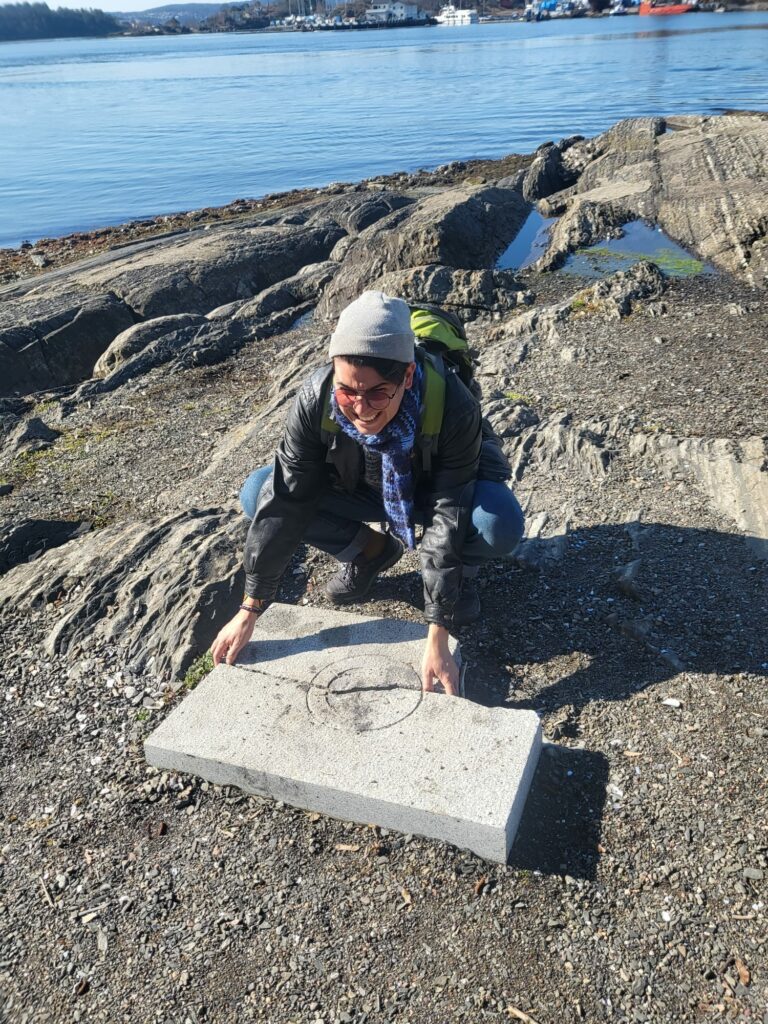
A main takeaway of the course was the difference between extraction and extractivism. The course helped me clarify certain concepts (extraction/extractivism) and gave me ideas regarding how to approach extraction/extractivist practices or processes through ethnography – the focus on different verbs/actions was especially helpful. Additionally, it made me reflect on things and processes (connections, transformations, infrastructures, displacements, etc.) that are connected but not limited to the most obvious extractivist practices.
Looking at these different things that can be extracted and, thus, potentially be extractivistic in nature, I believe helps think through the concepts and give them a richness by adding complexity. The presentations of other people’s fieldwork, and subsequent discussions, made me reconsider so many activities I have been observing in my own field site. There is a lot which I hadn’t considered as extraction before. But breaking down what extraction can be into its possible constituents, like ‘Displacing and re-siting’, had me writing notes in margins throughout the week, questioning how it might fit with what I have seen.
I began thinking that extraction doesn’t seem to carry the same normative weight as extractivism does; that extraction is one of many quintessentially human practices one could name. Extraction of gold, for example, happened in Latin America long before the conquest. I thought this nuance could bring some analytical wealth to a study of extraction. But now I wonder, does it matter to make the difference in a capitalist world? To what extent is the end of an extraction ethnography to end extractivism? Is this the point of making a difference between extraction and extractivism? Is it not the extraction of labor and resources, these unbalanced cycles of production that exhaust a territory ́s life-generating relations, at the very base of capitalist relations? Is theorizing about the difference between extraction and extractivism useful for an emancipatory anticapitalist struggle? I feel that a general doubt is developing within me. But that is not the same as to say that this conceptual nuance is meaningless, for it may help in the making of fairer collaborations in research, reflective collection of data, or in understanding some things about the movement of people, for example. The week we spent in the unnaturally warm Oslo spring, shuffling around, getting lost and disoriented in the many ways extraction applies to many different contexts, allowed me to experience a break in my thinking process; allowing me to understand extraction as much more than colonial and/or capitalist movement of resources, but a shifting of sites, meanings and entanglements of more-than-human lives in the production of locations, tools, and doers of extraction.
During the summer after the course there was a case that is related in some ways to ending and which received a fair share of media attention. The news story was that the Smithsonian museum still had the remains of the bodies of the ancestors of indigenous peoples that, years before, had been collected without consent from the graves they laid in, transformed into data, re-sited and stored in museum collections, leaving behind everything that comes with the defilement graves. In the end, the bodies were displaced to basements that serve as museum archives, along with a universe of symbolically charged objects that those who remember and worship them must ask permission to a museum to access.
This case really puts the finger on the metaphoric blister when it comes to reflecting about the end and the ends of research. But it also invited me to ponder about the importance of ending research with a similar rigor that is more or less ubiquitous nowadays when it comes to beginning research. Just as identifying the end of a course was crucial in the endeavor of writing these lines, identifying the end of an extraction ethnography might be crucial for specific endeavors most likely including the people who participate and the territories they take place in. At some point in the course, I appreciated a definition of ethnography, of the many that were shared during the first session, that put an emphasis on writing as part of the ethnography. There is a connection between that definition and the point I am attempting to deliver. The end of the ethnography might be after writing it, but what is done with the writing and the writing materials gains importance in the end. What is it used for? By whom? Where? I am sure that there are different ways of valuing the work that comes out of an ethnography and that not every researcher has the same normative stance (be that implicit or explicitly), but ending by asking such questions is not only what initiated this exercise, it also was an entire half of the problem in the Smithsonian case and perhaps in any scholarly endeavor.
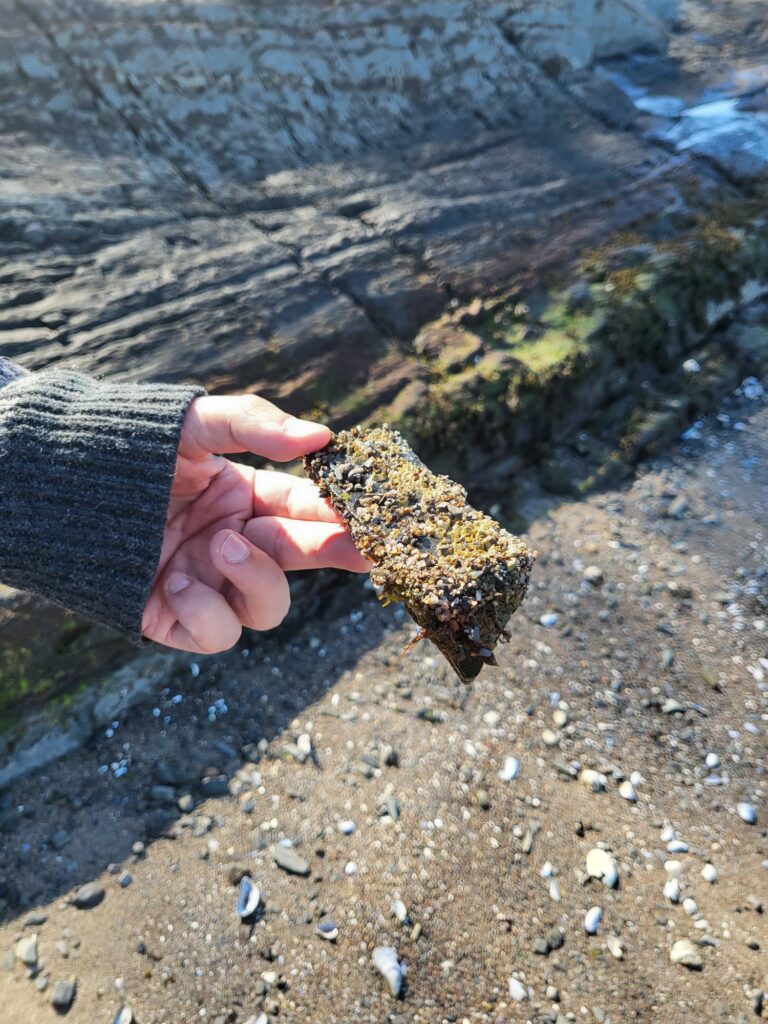
References
Bauer, S., (forthcoming). Seeing Like a Model Fish: How Digital Extractions Mediate Metabolic Relations. Science, Technology and Human Values (Special Issue).
Bauer, S., 2014. From Administrative Infrastructure to Biomedical Resource: Danish Population Registries, the ‘Scandinavian Laboratory’, and the ‘Epidemiologist’s Dream’. Science in Context 27(2): 187-21.
Delgado, A., 2021. Microbial extractions: Sequence-based bioprospecting, augmented promises, and elusive politics. Science, Technology & Human Values. https://doi.org/10.1177/01622439211055693
Kopytoff I (1986) The cultural biography of things: Commoditization as process. In: Appadurai A (ed.) The Social Life of Things: Commodities in Cultural Perspective, Cambridge: Cambridge University Press, pp. 64–94
Leifsen, E., 2017. Wasteland by design: Dispossession by contamination and the struggle for water justice in the Ecuadorian Amazon. The Extractive Industries and Society 4(2): 344-351. ISSN 2214-790X. https://doi.org/10.1016/j.exis.2017.02.001
Reinert, H. (2018). Notes from a projected sacrifice zone. ACME: an international e-journal for critical geographies, 17(2), 597-617.
Richardson, T., and Weszkalnys, G., 2014. Introduction: Resource Materialities. Anthropological Quarterly 87(1): 5-30. https://doi.org/10.1353/anq.2014.0007
Sawyer, S., 2022. The Small Matter of Suing Chevron. Durham, NC: Duke University Press.
Sawyer, S., 2004. Crude Chronicles: Indigenous Politics, Multinational Oil, and Neoliberalism in Ecuador. Durham, NC: Duke University Press. ISBN 0-8223-3272-8.
Tironi, M., 2018. Hypo-interventions: Intimate activism in toxic environments. Social Studies of Science 48(3): 438-455.
Tironi, M., 2020. Rocks have Histories. In: Geological Histories. Geological Anthropology Series. Society for Cultural Anthropology. https://culanth.org/fieldsights/rocks-have-history
Tironi, M., 2022. An Inside Sun: Lickanantay Volcanology in the Salar de Atacama. Front. Earth Sci. 10, 909967doi: 10.3389/feart.2022.909967
Weszkalnys, G., 2014. Anticipating Oil: The Temporal Politics of a Disaster Yet to Come. The Sociological Review, 62(1_suppl): 211–235.
Weszkalnys, G. 2015. Geology, Potentiality, Speculation: On the Indeterminacy of First Oil. Cultural Anthropology 30(4): 611–639. https://doi.org/10.14506/ca30.4.08.
Author Biographies

Sarah Rose Bieszczad, CWTS, Leiden University
Sarah Rose Bieszczad is a PhD researcher at the Centre for Science and Technology Studies at Leiden University, where she is part of the Fluidknowledge project. Her work focuses on the deep sea research, through which she has become fascinated and frustrated by deep sea mining and how it is proposed as the solution to the clean energy transition. Outside of her project research, Sarah Rose advocates for more ways of doing activism in and with STS, both through her work with WTMC (Dutch STS society) and EASST.
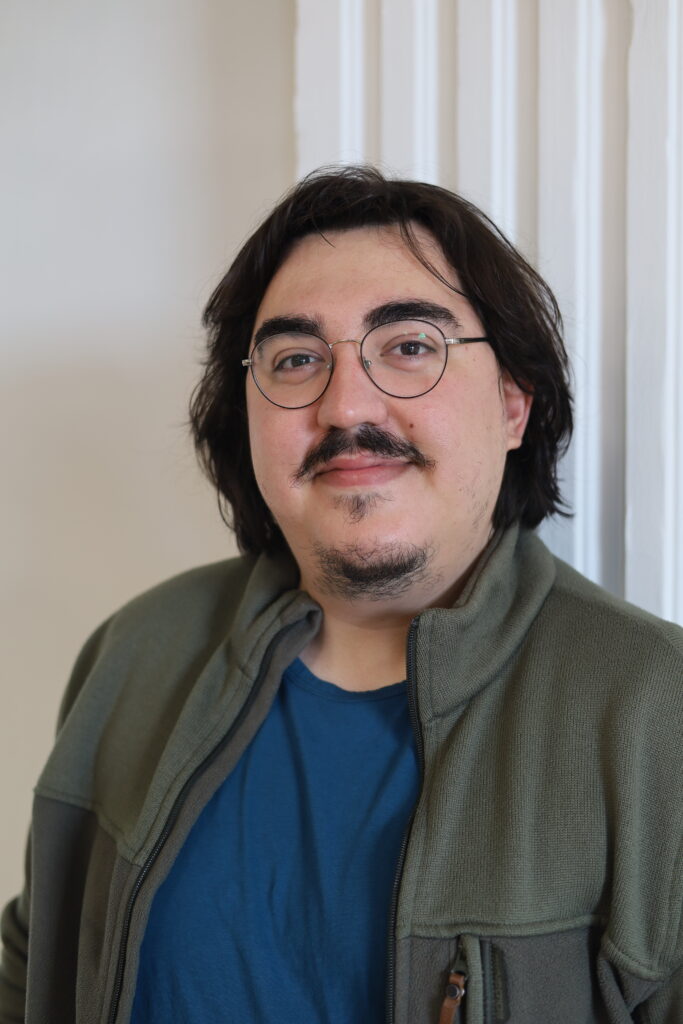
Efe Cengiz, University of Groningen, Campus Fryslân
Efe Cengiz is a PhD student at the University of Groningen, Campus Fryslan. His work concerns the production and imagination of the futures of olive grove landscapes in Aegean Turkey, through struggles of knowledge/power amongst interested and not-only-human actors.
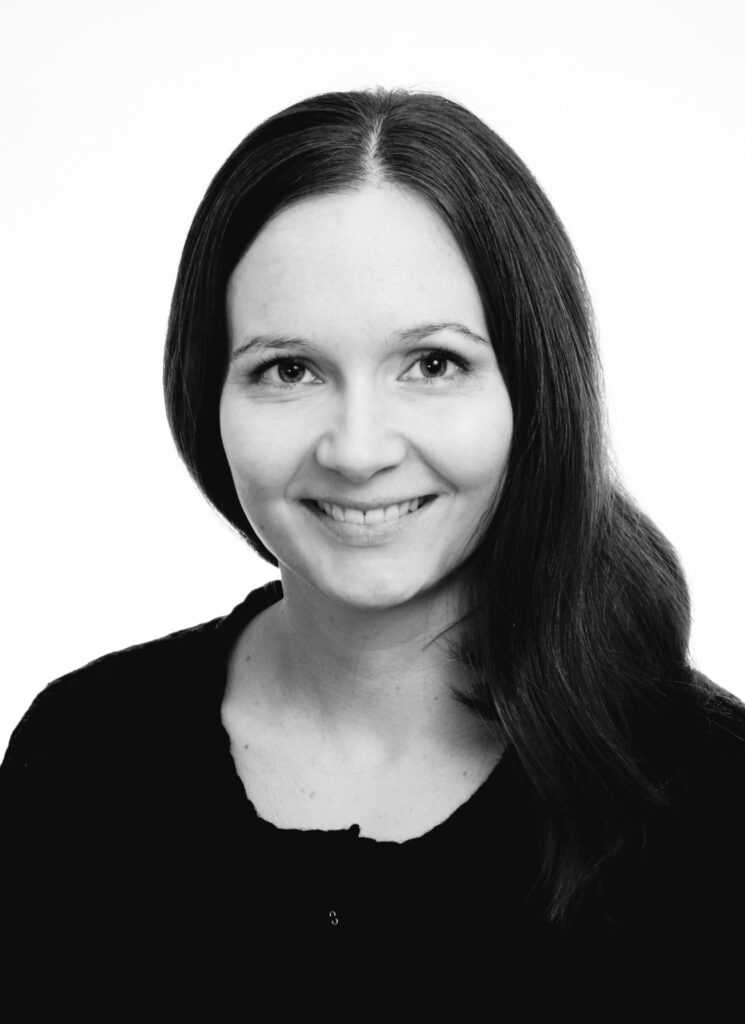
Viliina Kaikkonen, Global Development Studies, University of Helsinki
Viliina Kaikkonen is a doctoral researcher in global development studies at the University of Helsinki. Her research interests centre upon the social, political, and material processes related to mineral exploration projects, and she is currently conducting ethnographic research on lithium prospecting in Portugal.
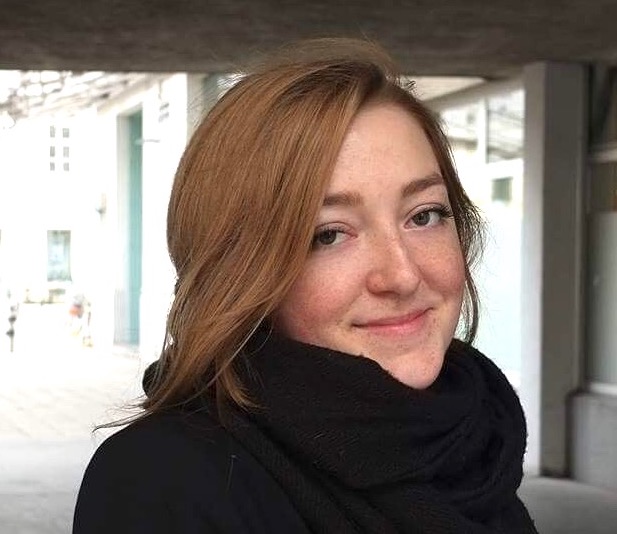
Sofie Kronberger, Department of Social and Cultural Anthropology, University of Vienna
Sofie Kronberger is a medical anthropologist and science and technology scholar interested in Hearing and Listening, Data Economies, and Artificial Intelligence. Before starting her PhD at the “Health Matters” Research Group led by Janina Kehr at the Dept. of Social and Cultural Anthropology, University of Vienna, she was a researcher for the interdisciplinary research project K.Rex, researching machine learning in law enforcement at the Department of Science and Technology Studies at the University of Vienna.
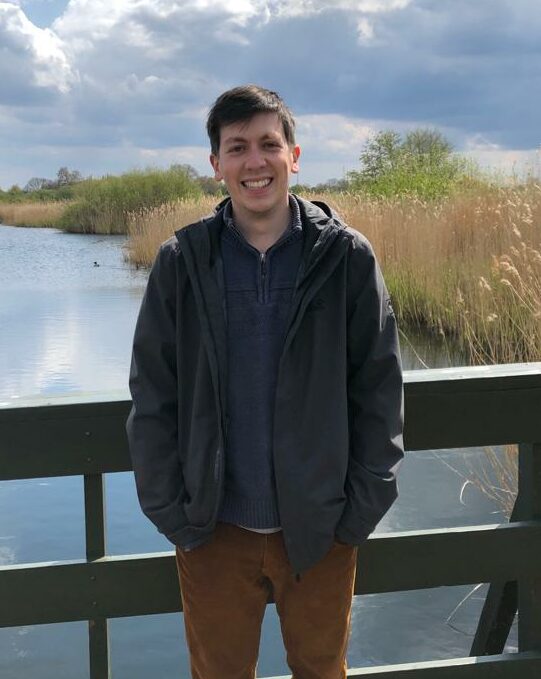
Rhys Anil Madden, Department of Anthropology, The London School of Economics and Political Science
Rhys is an ESRC-funded PhD student in Anthropology at the LSE. He is interested in people’s ideas about the coastal commons and its future, particularly with regards to climate change, managed retreat, coastal recreation and habitat restoration.
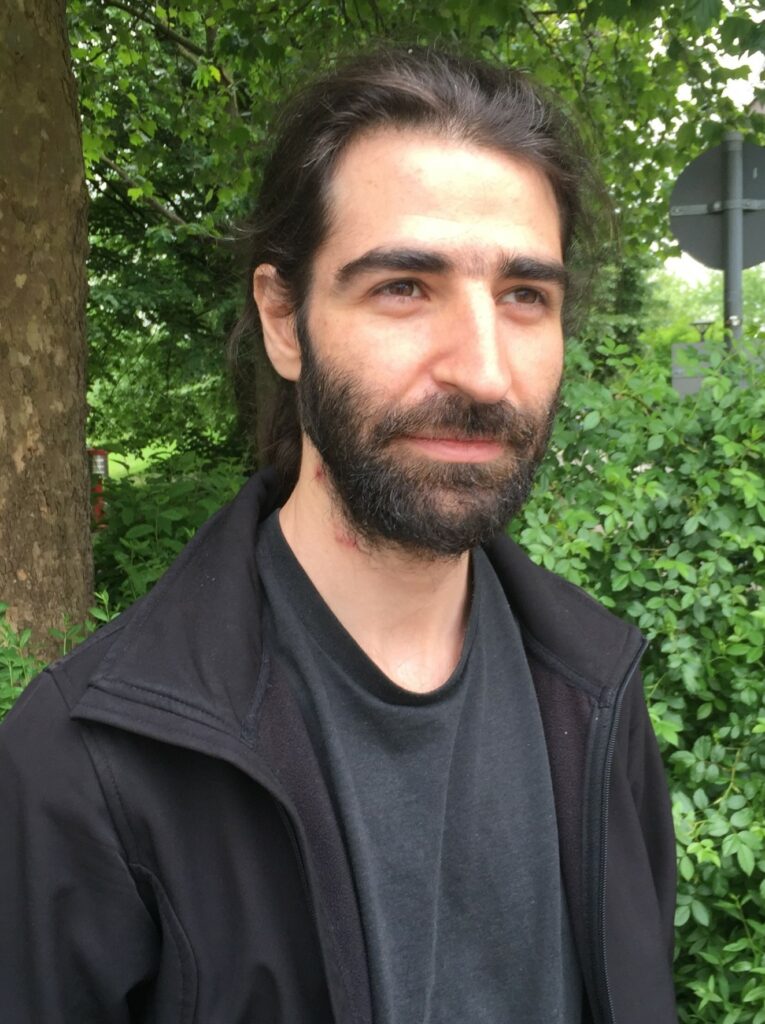
Ricardo Paris, Institute of Development Research and Development Policy / Institute of Geography
Ruhr-Universität Bochum
Ricardo Paris is a PhD candidate at Ruhr University Bochum in International Development Studies at the Institute of Development Research and Development Policy (IEE), member of the Research Group Interdisciplinary Geoinformation Sciences. His present work is focused on territorial transformations and mega-infrastructures in northern Mozambique.
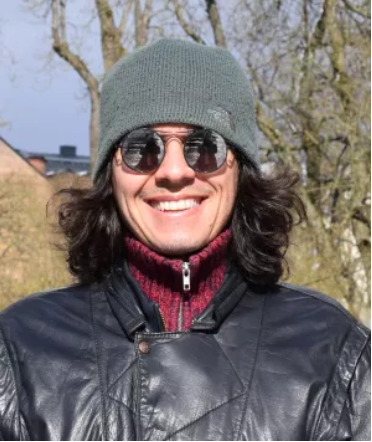
Juan Antonio Samper, Lund University Center for Sustainability Studies
Juan is a doctoral researcher at Lund University´s Centre for Sustainability Studies. He is currently conducting ethnographic research about the defense of the territory in the Colombian Amazon.

Lea Marie Sasse, Department of Media and Social Sciences, University of Stavanger
Lea Marie Sasse is a PhD candidate at the Department of Media and Social Sciences at the University of Stavanger, researching trans-local justice implications of the transition to electric vehicles. The project explores the tensions and meanings associated with the siting of a gigafactory in Germany and the development of mineral extraction in Argentina. She holds a Master’s degree in Economic Development from Lund University. Her research interests lie in development studies, energy geographies and political ecology.